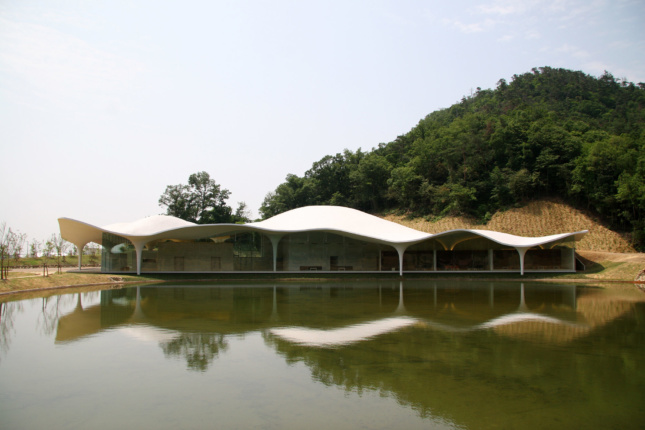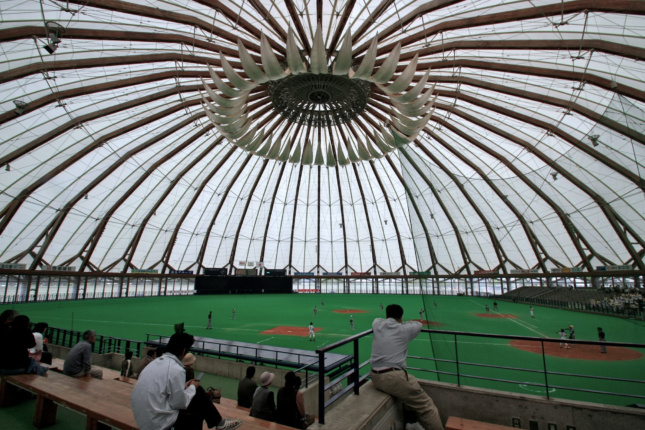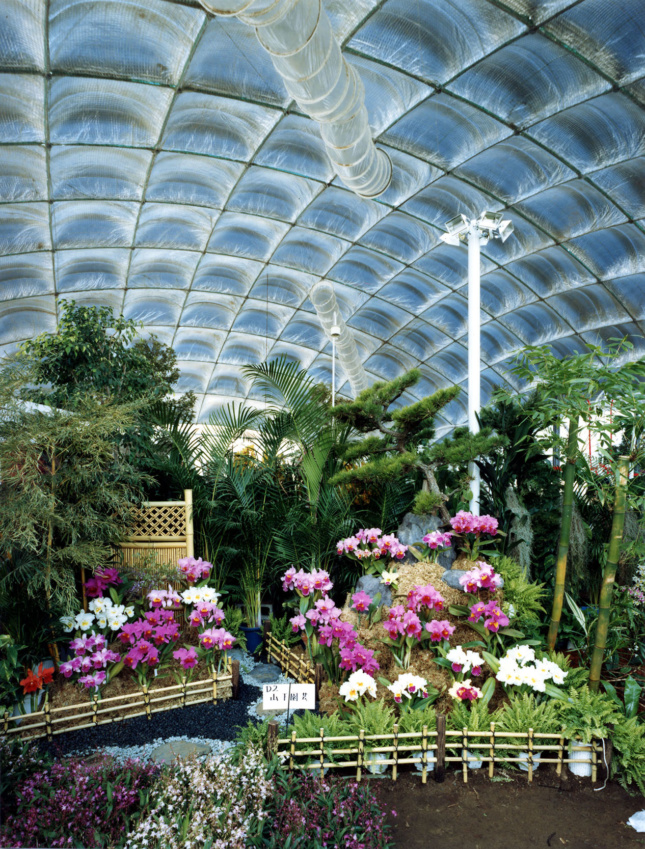Structured Lineages: Learning from Japanese Structural Design
Edited by Guy Nordenson
Published by the Museum of Modern Art
MSRP $45.00
Western architects’ fascination with Japan is indisputable, a tendency most famously personified by none other than Frank Lloyd Wright. Contemporary practices are contributing to what is perhaps the third or fourth wave of Japanese influence on American architects, and this group was the focus of the 2016 Museum of Modern Art (MoMA) exhibition A Japanese Constellation: Toyo Ito, SANAA, and Beyond, organized by Pedro Gadanho and Phoebe Springstubb. There is something simple yet sophisticated in the examples of contemporary Japanese architecture selected for this exhibition—attributes one can trace to the synthetic nature of Japanese design itself.

To accompany the exhibition, Guy Nordenson, a structural engineer and professor at Princeton’s School of Architecture, organized a symposium that sought to delve more deeply into Japanese design from the vantage point of the structural engineers who have collaborated with these architects. (Nordenson himself has a significant engineering practice, and worked with SANAA on the New Museum in New York and Johnston Marklee on the Menil Drawing Institute in Houston.) The resultant publication, Structured Lineages: Learning from Japanese Structural Design, illuminates key figures of postwar Japanese structural engineering and the hybrid nature of their consulting on the major works in the MoMA show. Consulting is not the right word for the essential, creative contributions of these talented engineers. As Nordenson noted in his introduction, “In Japan the cultures of architecture and engineering are entirely intertwined.” Laurent Ney observed that the architect and engineer Saito Masao titled an exhibition that he organized at the Architectural Institute of Japan in Tokyo in 2008 Archi-neering Design, coining a term that neatly grafts the two disciplines. Aspiring Japanese architects and engineers study together at university in the first phase of their education and specialize only later on. Design and technical skill are given equal weight academically, which forges a hybrid of both disciplines from a unified way of thinking.

The Structured Lineages symposium highlighted various practitioners of this fusion of art and technology: In addition to Masao, Yoshikatsu Tsuboi, Mamoru Kawaguchi, Gengo Matsui, Toshihiko Kimura, and the most significant contemporary structural engineer, Mutsuro Sasaki (who has collaborated with architects like Kenzo Tange and Rem Koolhaas), were given their rightful prominence by experts such as Marc Mimram of l’Ecole d’Architecture de Marne-la-Vallée, Mike Schlaich of Technische Universität Berlin, Jane Wernick of Jane Wernick Associates, and William F. Baker of SOM. Three roundtable discussions, moderated by Sigrid Adriaenssens, John Ochsendorf, and Caitlin Mueller and transcribed in the book, explored the basis for this “intertwining” of disciplines. These revelations—of what would be considered in Japan to be open secrets—feel like the discovery of why there is such qualitative consistency in Japanese design and architecture.
Numerous structures are presented throughout the book. Little known architect/engineer Mamoru Kawaguchi’s Fuji Pavilion at Expo ’70 in Osaka, the book’s cover image, could easily be mistaken for an early Ant Farm proposal (or a late Zaha Hadid project), with its colorful inflated tubular skin and curvaceous geometry. Toyo Ito’s innovative Sendai Mediatheque, with its occupiable structural elements engineered by none other than Sasaki, makes an appearance. MoMA curator Sean Anderson details how, in 1954, a traditional Japanese house came to be the third constructed “House in the Museum Garden,” following designs by Marcel Breuer and Gregory Ain.

This newly published book of the symposium offers essential enlightenment into the thinking, philosophy, and technical explorations behind these canonical buildings. It adds insightful analysis of and commentary on the special circumstances that gave rise to these projects, even though these significant Japanese structural engineers may be unfamiliar to the average American architecture student (and quite possibly for the average American architect). The documentation of the technical contributions, coupled with the high regard in which these projects are held internationally, makes Structured Lineages a necessary companion text for those with a deeper curiosity about the basis for the uniqueness of the design and structural experiments that have come to define architecture in contemporary Japan.
Craig Konyk is an architect and the chair of the School of Public Architecture at the Michael Graves College at Kean University in New Jersey.











